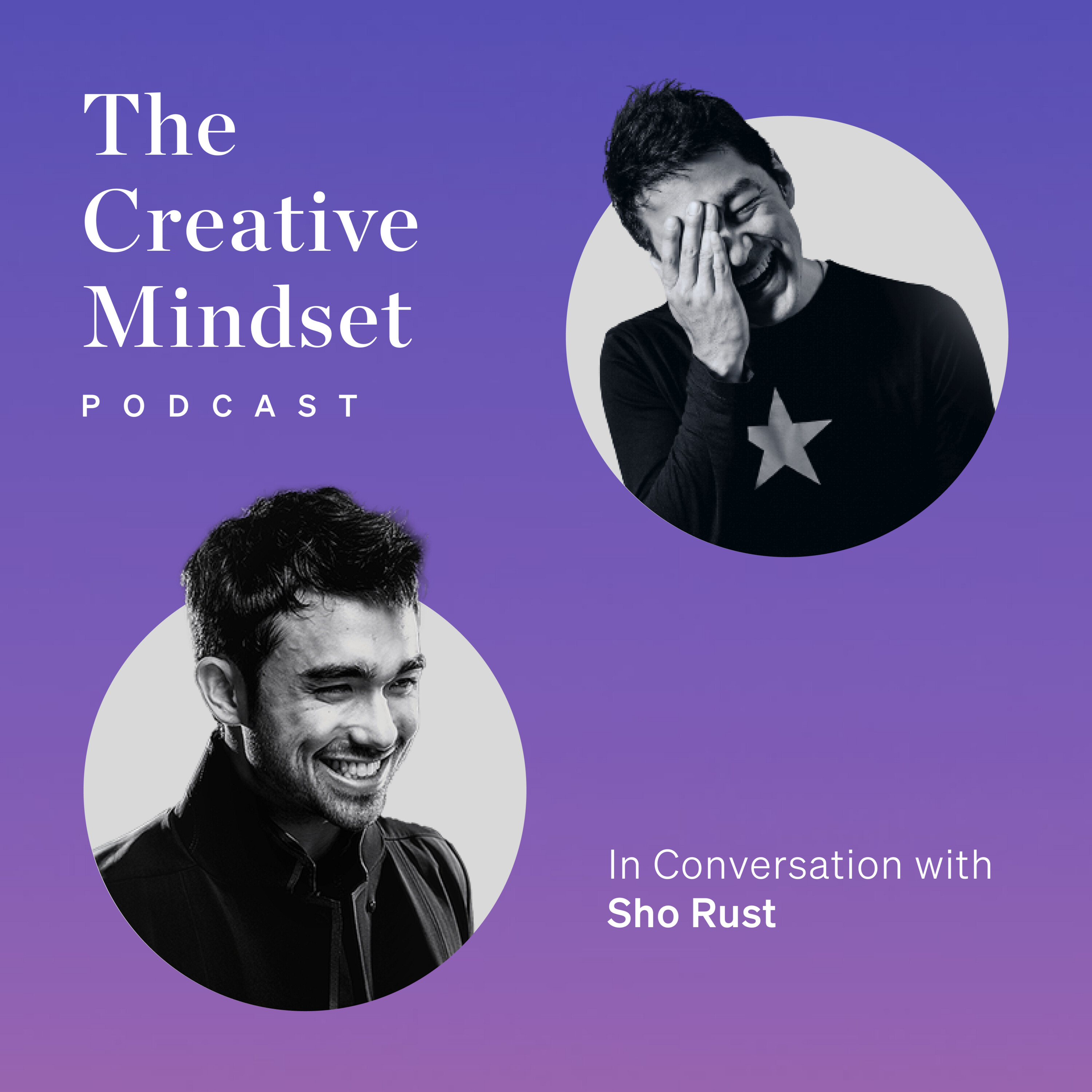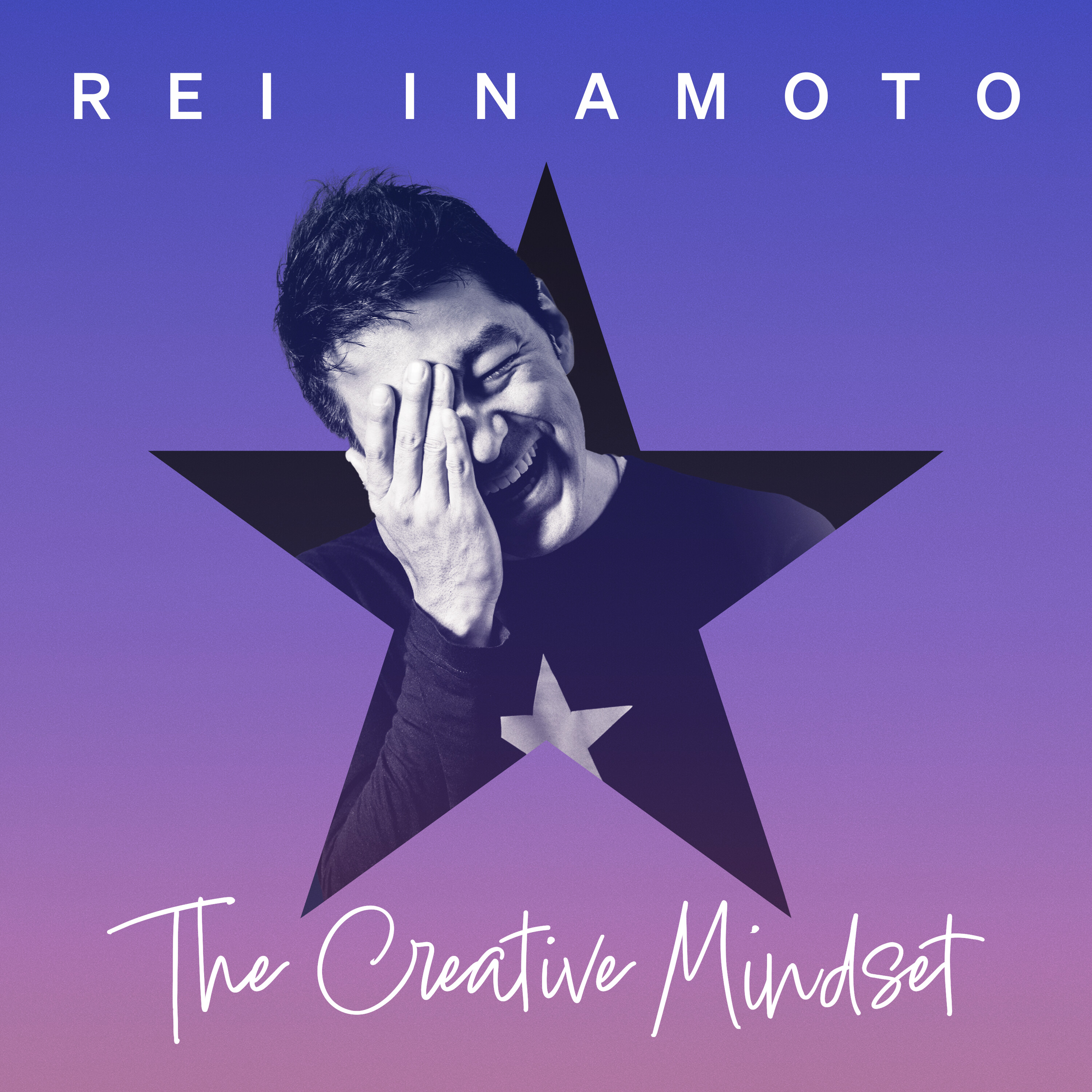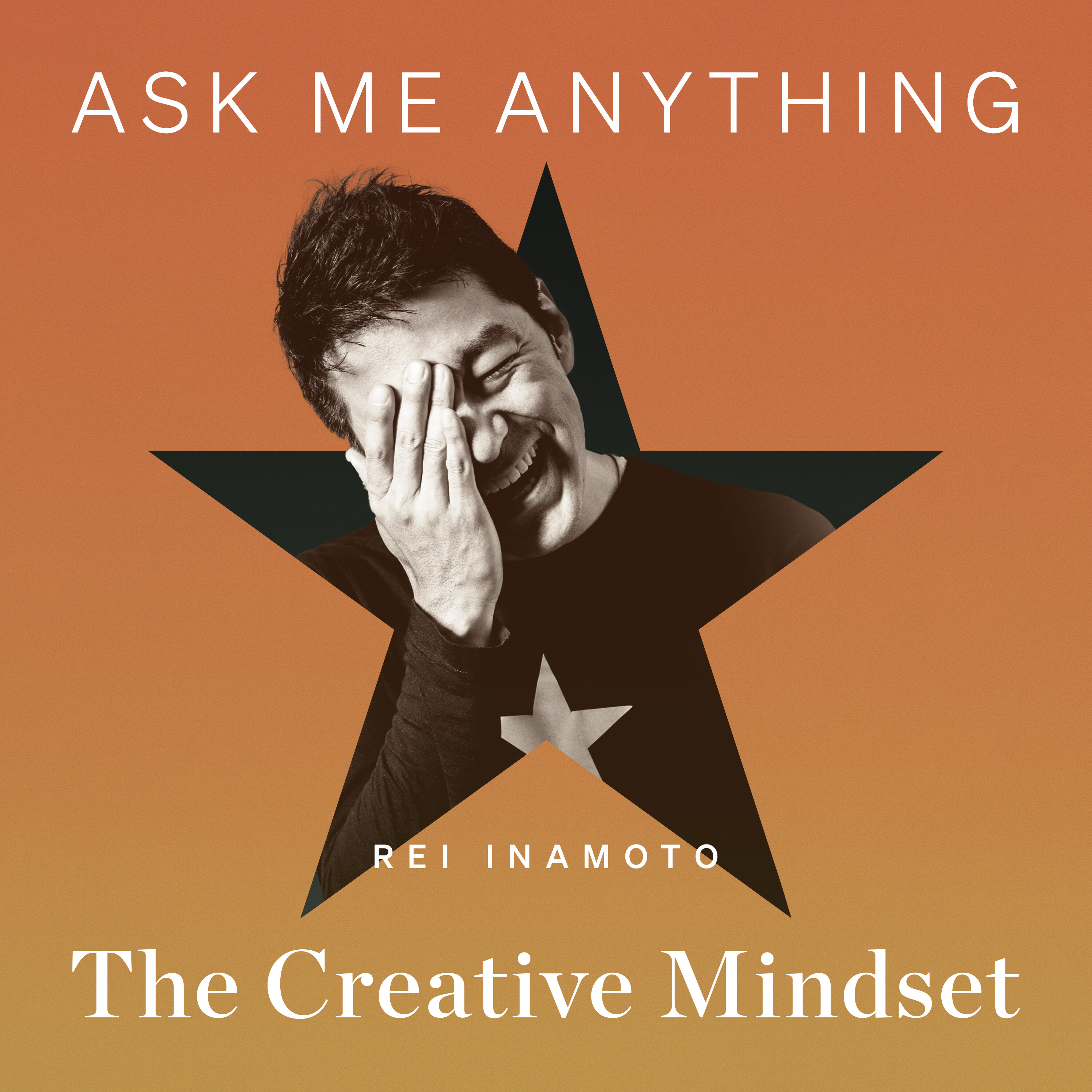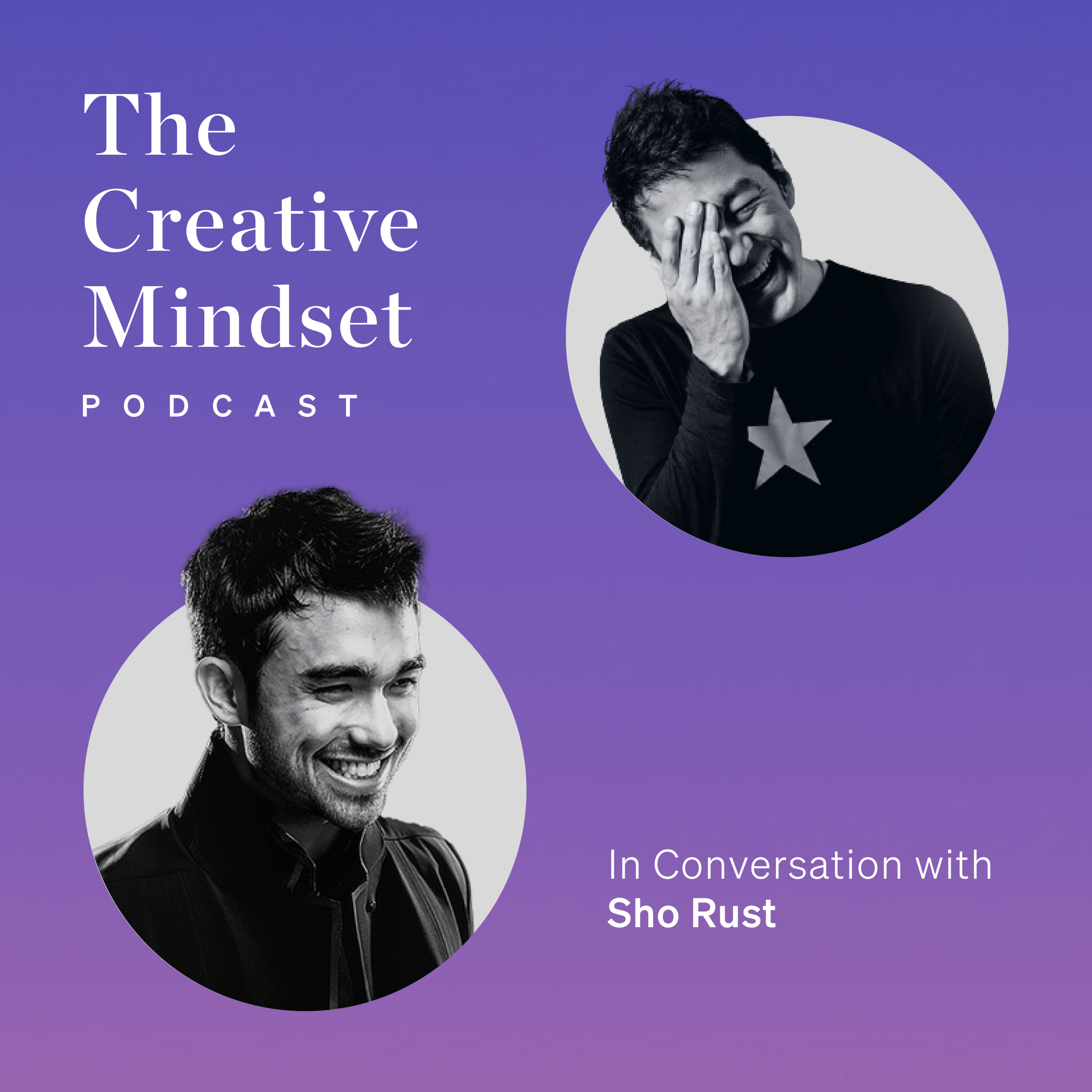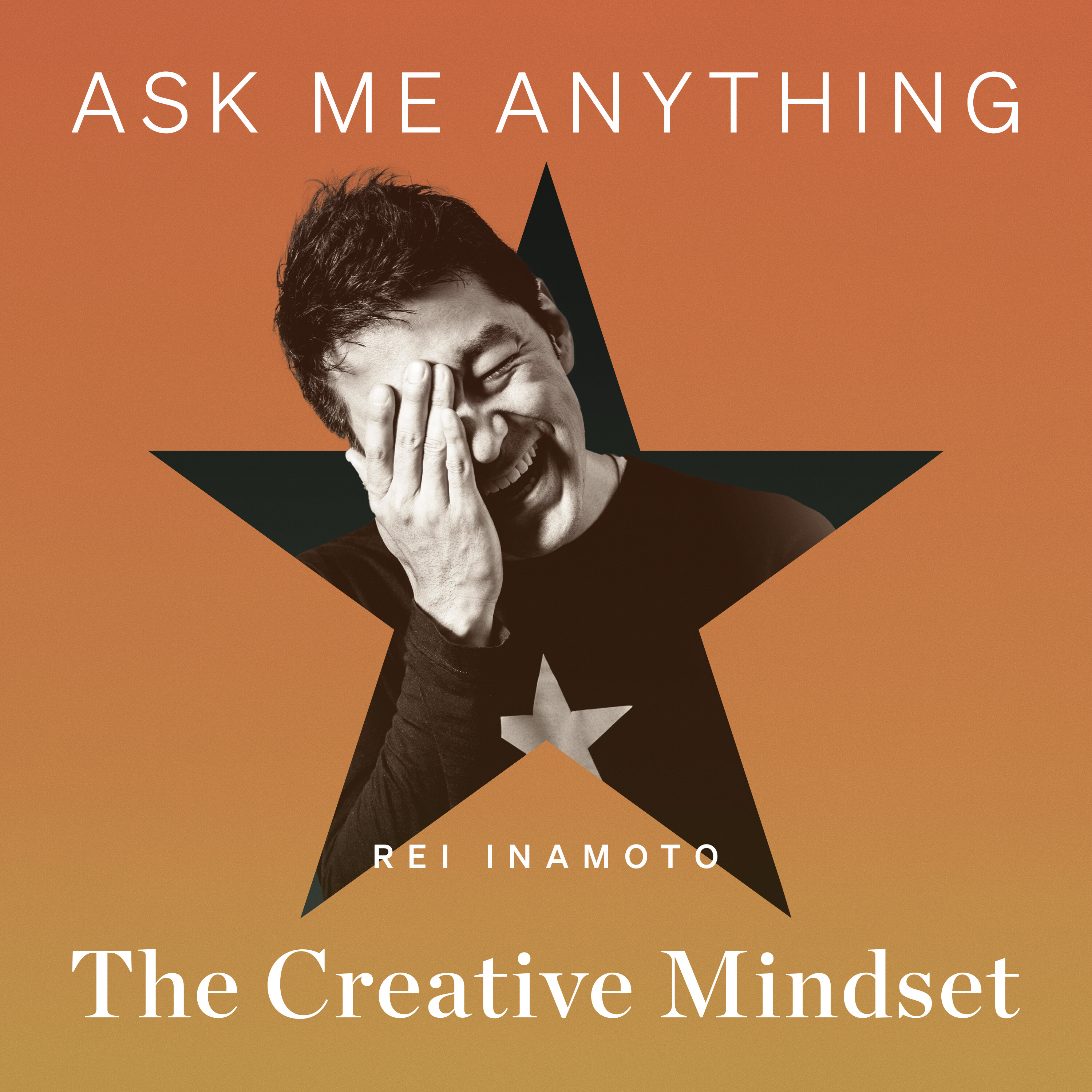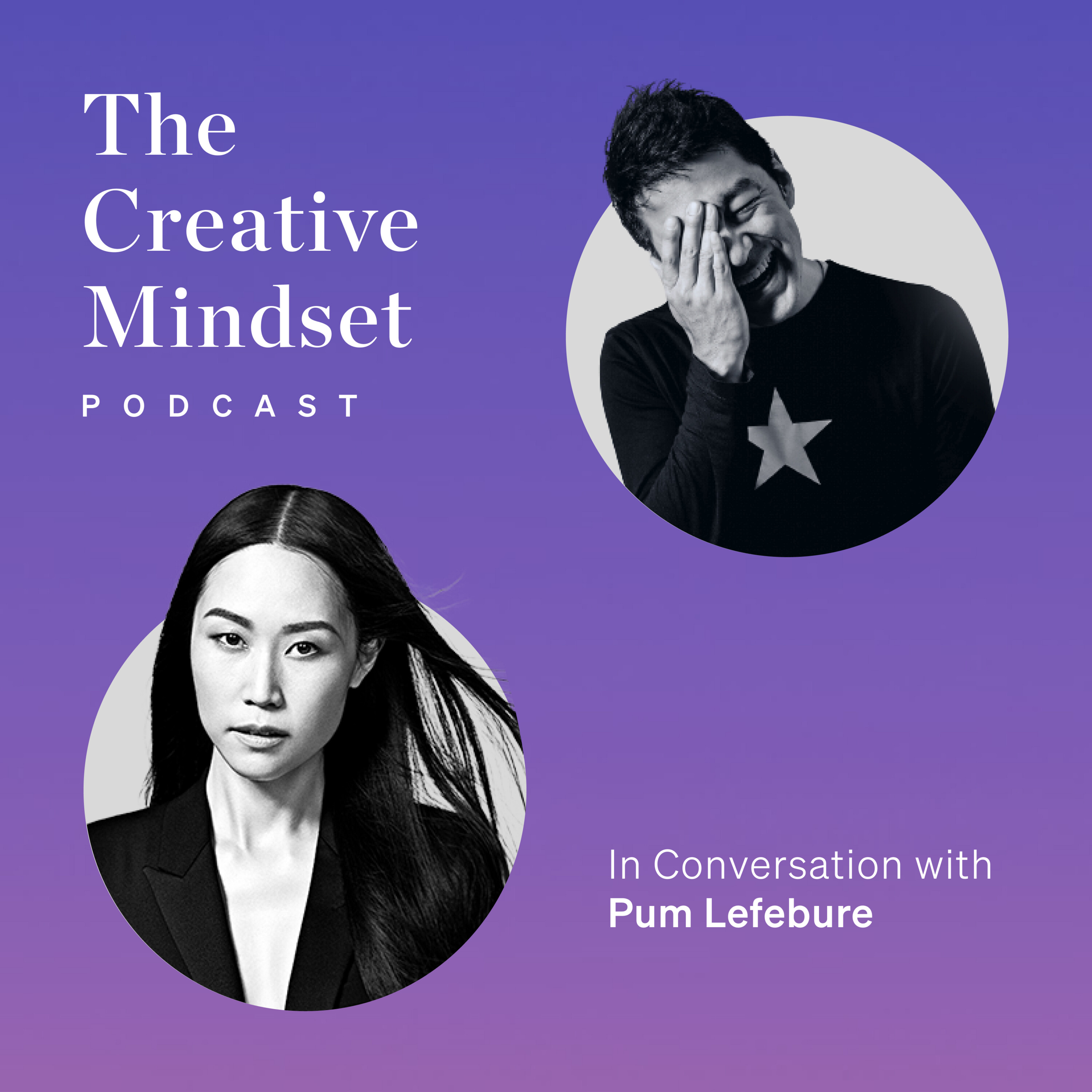to supercharge your content creation process. The Shoulder AI platform helps companies reduce
the time and money spent on building a brand. With access to cutting-edge technology and their
experts' valuable knowledge about branding, businesses can succeed with reduced costs.
If you haven't listened to part 1 of my conversation with Sho, we talked about his
journey from a student who studied design to a design professional working long hours
and then turning his frustration into a solution and then company. Please do have a listen,
it's really worth it. In part 2, we talk about the future of AI-based services in an
increasingly competitive and crowded industry. So let's get started.
Did you, along the way, you know, you've been around for 5, 6 years now, but along the way,
did you need to take on investment? We did, we did. I think about a year in,
we won like a pitch competition. That's like free money, right? You just get a grant.
From that grant, we weren't looking for funding, but pretty much like 5 to 8 months later,
someone saw that we won that competition and then gave us a little bit more money.
And then we're like, okay, cool. But we never seriously seeked out funding because we were
always kind of making a little bit of cash ourselves. And then about 3 years ago, we took
about $1.4 million in seed investment. People wanted to give us more, but we wanted to just
be really smart about how we grew. I see this all the time with startups as they raise a ton of money
and the company has to grow so fast and the investors expect the company to grow faster.
And then so a lot of times the leadership gets completely replaced because they're like, hey,
you guys are at this stage of a company. You don't have any experience operating at this stage
of a company. We don't have enough time for you to learn. So we're just going to replace you.
And then for good reason too, like leadership and the startup team, they should be okay with
leaving because at that point, the company requires different types of skillset. And so
instead at our company, we really focus on investing in leadership and different things
like that and helping them grow as individuals as well. So we can kind of grow them up with the
company and maintain like the culture of innovation and what we do. Right, right, right, right. You
talked about some of the product mistakes that you made, such as, you know, you made a product
complicated, you listened to too many people and you sort of lost the simplicity focus,
the focus of the product. Were there other mistakes, people mistakes that you've made?
Of course, absolutely. I mean, those were, that's 90% of my mistakes.
I see.
Whether it was at one point we brought in more of like a sales leader and different things like that.
Yeah.
And then it kind of completely shifted the culture of the company. I was dealing with like a rebellion.
Well, tell me more about that. What was the rebellion?
So the rebellion was between like team members that really wanted to become more
like product-led growth model, where the product was kind of selling itself.
And then the other side of the company that was basically saying,
Hey, like we're enterprise sales. Like we don't need to invest any more in product.
Our product is already great. We just need to really focus on as an entire company on sales.
Sales, yeah.
But then it killed like our culture of creativity and innovation and just like what attracted people
to our company in the first place. But at the time, honestly, in my head, I was like, you know,
there's some truth to what they're saying. Our product is extremely robust and we just have not
invested any money in sales, really. So now is the time to do that shift.
That shift turned out to be a little bit devastating for us.
The other part too was when we raised money, when we raised the 1.4,
suddenly we had an abundance of cash. And then from an investor standpoint,
they were like, run, run, run, like higher, higher, higher.
Don't worry if they're not the perfect individual. You'll learn from even their mistakes.
You just need like people on the ground getting tasks done.
And then so we scaled up, like tripled our size in a few months. It was ridiculous.
Like we had a full out HR department and like all these different things that really took attention
away from what we were building in the product. It became more about like building the company
and the office and different things like that. And the team slowly started to separate themselves
from like different responsibilities that they had at the company. And so a lot of like finger
pointing and different things like that started to happen. It became dangerous.
I realized quickly that I started to develop some blind spots in my own company
where it was so big that there were certain like pods or divisions in my startup,
where I didn't have enough visibility. The funny part was, is that we're actually more
productive now. Right. I can understand. I can understand. Yeah.
Yeah. Yeah. In this field specifically, it's very, like quality is significantly
more value than quantity. Specific questions about how you're leveraging AI. So I understand
that you, your product uses AI for your clients to make the management of design assets and
generation of design assets for corporations much, much easier and much, much more efficient.
And give me a couple of examples of specific uses of AI for a brand.
So I would say the biggest use case is probably social media, of course, like creating social
media assets, interactions, blog articles, white papers, proposals, internal decks on websites.
There are just a ton of touch points and assets that have to be generated.
And then people have probably seen like through chat GPT and stuff like that. Hey, you know,
follow this playbook to create your sales email or something like that. In our platform, you don't
have to provide the AI any context. You could just say, hey, I need a sales email for this person
or I need a proposal deck for BMW or this company. And then it has all the context. It's been trained
on all the constraints and guidelines, what to do and how to do it of the company.
And then if the AI ever misbehaves or doesn't do it right, you could just create a new guideline,
a new constraint in our system, you know, get it right moving forward. And then that's where like
these brand guidelines and a lot of these systems that these big companies have already in place
really thrive in a platform like ours. And then because you can have someone that has no knowledge
on how to write a proper ad campaign or something for a specific product in a specific location,
ask the AI in a different language for that campaign and the AI will spit out something
that's basically tailored for them. And they don't have to worry about overseeing it as much
as they would have to do with other systems where hallucination, like fake context injection is a
thing. In our platform, the AI is highly motivated to use all the data that's included in your
knowledge base first. Is your platform able to produce both static images and video images,
or is it just static images? Ah, really good question. So as of this week, we are completing
video. So we're just QAing it this week. We'll probably have in our platform next week. Right now,
it's just we generate the text and we generate the image and then the template for you separately.
Okay. And then you can combine it within our platform and then export it. I see. But we use
a language model and we use an image model separately. And we use automation in our
Figma plugin to combine it into a graphic. Got it. On the flip side, what are difficulties that
you've run into using AI for branding purposes? A lot of challenges. And then like the concerns,
like our platform is basically designed to kind of mitigate those challenges and concerns.
The biggest issue is when people don't train the AI, is that they just try to jump in there.
They don't provide any kind of guidance to the AI in terms of who they are and what they do and
why they do it, mostly because they don't know. And that's why we like to partner with agencies,
because they have a process of distilling that from the client. They have an onboarding process,
typically, where they all kind of understand who the client is. We have an onboarding process as
part of our software as well. But if you ask a company or even a CEO, like, hey, what are your
company values or who's your target customer? Sometimes they freeze. Ironically, new startup
founders typically do a better job of answering these questions well, because they have to for
investors. But especially as the organization gets bigger in different things like that,
defining some of these roles becomes a really long process of like a lot of meetings and
little conversations about who is our target customer? What are our key benefits? What are
we trying to do in the next five years type of thing? I saw on your website, brands like Pepsi
and Porsche and those names, but I wasn't sure if they were real users of your platform or if you
were using them as examples. We worked with Fortune 100s. A lot of them, to be honest with
you, we work within their innovation departments and different things like that. Because of legal
things with AI and different things like that, typically we're working within innovation
departments at these different companies. We still have a few big agencies that we work with,
and we still, that's who we love to work with the most. And that's probably 80%
of our revenue right now. And we also have universities too. So we have a few schools,
including my old school, Arts Center College of Design. They use it to help teach students
and different things like that, which is one of the most fulfilling things for me to see.
Creative individuals being able to express themselves more, being able to like have their
ideas and seeing them come to life a lot quicker. I see. Has any of your clients slash users
stopped using your service? Yes. Yeah. Yeah. And for what reason? Why did they stop?
This year in January, it's a little bit brutal because a lot of companies just went bankrupt.
Oh, right. Right. A lot of our agency customers just really struggled this year. And then that
I like to think of myself as like Edna Mode from The Incredibles or like Q from James Bond
or Sherry from Black Panther. And then that's how I see AI too. Like the best AI is going to
come from AI that's augmented with really, really great like human experts and intelligence. That's
why I love partnering with people like yourself or Chris Do that have that sense of good versus
bad. That's like AI's biggest weakness. The metaphor that you just used, the relationship
between James Bond and Q, I found that to be very apt because James Bond is amazing already to begin
with. And he becomes super amazing because he's teamed up with Q who can give him these amazing
tools to do insanely human things, insane things, right? But just because a regular person is teamed
up with Q doesn't mean that they can become the next James Bond. So, the starting point, you know,
a regular person versus James Bond is already night and day and then, you know, James Bond
becomes even greater because he's teamed up with Q. So, that's what your tool is about.
Yes, 100%. Most people you give this tool and then they don't know what to do with it.
Yeah.
It's funny though, like you give a student at art center the same tool.
Yeah.
And then in 15 minutes, they come up with 20 new ideas and with visuals and a business plan
in a language that's different from their own. And then I've seen this all the time. And then
people are to think that this is James Bond, you know, like he has those different gadgets.
Like there's a skill in using them with finesse and then that skill could be developed with time.
But in terms of churn for customers, it's the ones that don't have anything to give to the AI.
If you don't have anything to give to the AI, just use chat GPT, you know,
just like you have nothing to add to it. But if you do, if you are like talking to customers,
if you are having these types of conversations, like getting these little insights that are not
readily available to these systems, your AI will perform significantly better.
If the AI comes from a sense of identity or positioning, that means that it's aligned with
what you want. If you want the AI to be able to generate stuff that you want, you know, solve
that alignment issue first. But most people, like 80%, 90% of people don't have the patience
to solve that alignment problem. So it's going to be interesting to see how people start to
develop the patience to develop this as a skill and start teaching it everywhere.
It's been about a year since the launch of chat GPT, right? Have you noticed the difference in
your business or the landscape of the business that you're in before and after the launch of
chat GPT? Oh, in a huge way. So before chat GPT, like if I showed people chat GPT, basically,
no reaction. People were like, how are people going to know what to say to the AI? What to
talk to it about? Like, how are they going to use this? People just kind of saw it as a chatbot.
They weren't able to connect the dots that there was like an actual intelligence behind it.
They also didn't have the patience to really test it and doing like a turn test with it.
And then so it was really difficult for us. When chat GPT came out, actually, the big revelation
was the streaming. So when you talk to the chat GPT, when you talk to our GPT, like three seconds
later, a big paragraph answer will pop out. When you talk to chat GPT, it started streaming the
text. And then the streaming of the text was a huge breakthrough, honestly, from an experience
standpoint, because you get like an instant answer. It makes it seems like this machine is talking to
you because you're seeing it type out. You know, it's not just like, boom, a big block of document
or text, but it's quote unquote talking to you. Yes. Yeah. When it's just a big block of text,
people compare us to Google, right? They're like, oh, like, I could get results like that from
Google. But when you get a streaming amount of text, you're just like, wow, like there is an
intelligence. This is dynamic. I'm actually having a conversation. That's super fascinating.
I never thought about it, but I guess chat GPT interface, that's actually a design solution,
isn't it? Right. Like to stream the text, that's not very difficult to do. And it's existed for
many, many years, if not decades. But I guess one small but big visual effect that they introduced
in their tool made a big difference. That's fascinating. Yes. So it was between that and
also like just the delay that you feel like you're experiencing when you get the image.
Like that's where Midjourney, their image generator in some ways is really compelling
is because it like slowly fades in. And then you don't feel like you're waiting as long.
That was huge for us. And then chat GPT brought a ton of awareness into AI. And then people now
saw AI as, hey, like this is not really an option in terms of like, do I try to figure this out?
Like I have to figure this out. Every JP Morgan, Bill Gates, everyone's saying that like this is
going to be hugely pivotal for companies. And then companies that don't use it are going to die. So
let me figure this out. And they start using chat GPT and then they realize that there's a lot of
limitations, essentially. And then, and basically the fact that, oh, cool, I can use chat GPT to
write this, but I have to provide so much feedback and so much information to it that I might as well
write it myself. People experience that. Or the hallucination issue, like journalists. Oh, I want
to use it to write a story, but it's so convincing at telling fake facts, basically, that like, and
I have no control over that. That's a problem. And then the good news is that we mitigate the
confidentiality, that lack of context, understanding and knowledge, all the security and different
things like that, that they're worried about, the hallucinations. We mitigate against all that with
our platform. And then, so we've got a lot more interest from companies. But now this is on the
flip side, there's good and bad to getting interest from companies because before we didn't get
scrutinized that much. Like when companies would adopt our software, they'd be like, oh, it's just
another tech platform. And then just put it, take them through the typical tech product vendor form
and we're good to go. But now companies that work with us, they're like, oh, they're an AI company.
We formed three AI committees. And then we also formed like a legal and security committee too.
So they basically have to review all of our software code from head to toe for these big
enterprises. Like from a legal perspective, we have to be locked up in all these conversations
with them. And because there's been like a lot of things in the news about whether it was lawsuits or
copyright protection or different things like that, there's just a lot of legal people kind
of dragging their feet as they try to kind of catch up to the landscape and understand it better.
So it's been kind of good and bad for us. So I guess the good news is that because of the
launch of ChatGP about a year ago, people now understand what AI can do with those simple
little interface things, like the text typing out itself. What are some of the competitions that you
feel? Oh, a competition. Yes, very much so. So now when I have conversations with these big
companies, they're like, hey, why don't we just wait for Salesforce or Amazon, Bedrock or Microsoft
to come out with their own tool next year? A lot of these companies are already engaged with
companies like Adobe or Microsoft or these big tech companies. And then all of these big tech
companies are doing right now is that they're interviewing big enterprises and asking them,
hey, in an AI platform, what do you want? Because they're doing what we did four or five years ago
and developing a feedback loop, but they don't have a platform yet. But they're kind of promising
their customers, hey, this is a product that we're going to deliver to you in like a year.
And then we'll work together with you to kind of build out features to what you want. So from that
sense, like competition is really heavy, right? Like this is kind of how I mentioned it to a
friend that I was on an island, like a beautiful island. And I was like, hey, guys, it's awesome
over here. There's all this cool stuff. Why aren't you coming over? And then expecting a few people
to come by and visit and like tourism and different things like that. But cruise ships showed up.
This year, like Google is like the cruise ship, right? And you're like, oh, my God, like I,
they're going to take over. They're not going to just like visit this island. They're here to like
take over the island. And then now I see like Navy show up because countries are participating
in the AI race as well. So you have countries and then there's at least 10 big tech companies. So 10
cruise ships and a few Navy ships show up to this tiny island. And I was like, I kind of like slowly
put down my sign. And then my reaction to that really is that even though these big companies
are here and then they will have different products that will be very, very effective for
certain use cases, there are a lot of things that these big companies cannot do. For example,
in terms of incorporating this text to video, like video capability, we can implement it probably
four to five months faster than any of these big tech companies. Whenever something comes out,
they're going to have a meeting about it next week. And then the month after that, they're
going to like talk about wireframes. And then two months later, they're going to talk about, oh, like
we finally finished the design. Let's go through like a design presentation process. And then it
gets to engineering and then QA. And then it's all this other stuff that goes in. Like for us,
oh, cool. Like we have access to text to video now. Let's, by the end of the week, let's make
sure that all of our customers have access to it in a secure, confidential way. Like let's
first evaluate it. Okay. We already know we trust this company. We use them for image generation
before. Everything looks secure, confidential, encrypted. Let's make it available to our
customers so they have access to it. In the age of AI, like six months of not having access to
a certain model or a certain technology is huge. Like ChatGPT came out with like little kind of
custom instructions, right? But we have personas for three, four years. They came out with the
ability to add PDS and stuff like that. Well, we have an asset manager that can handle hundreds,
if not thousands of assets. Like we'll come out with a feature and then another company might come
out with something similar eight months later or something like that. But we're a speedboat
in between cruise ships. You don't want to be caught going in one direction when the tides
suddenly change. You want to kind of be the speedboat next year. If you do believe in AI
and its productivity capabilities and different things like that, and its ability to help,
people being very, very clear about what you want. Like a lot of people don't know what they want.
You know, like if a genie popped up and was like, what are your three wishes? It'd take people a
long time to figure that out. But the people that do know what they want, and then they're able to
clearly define that to the AI, are going to do exceptionally well. And essentially, everyone's
going to be walking around with meta-type glasses. This idea of everyone just kind of walking around
with a personal coach, it's going to be interesting how that changes society. Like for me, when I go
to the gym and I have a personal trainer, it's like night and day compared to when I go by myself.
Or Humane came out with a little pin. That pin actually was one of the things that hurt me the
most this year because I spent a lot of money developing something similar. It's hard to
compete with something like that. But you can imagine you probably will be printing out the new
little tech device or the new little watch case. You could create everything.
Lightning Questions.
During the interview, we dig deep into different topics surrounding creativity.
On the contrary, with this section, we ask the same questions to the guests to react on the spot,
and we don't let them see the questions in advance.
Question number one. If you weren't doing this, what else could you see yourself doing?
Artist. I used to be more of a fine artist, and I would definitely go back to that, probably.
Question number two. If you could live anywhere in the world, where would you live?
Japan.
Which city?
Kyoto.
Question number three. Where's the next place you'd like to travel to for fun?
Tahiti.
Question number four. Your favorite food?
Sushi.
Question number five. What's your favorite time of your day?
Midnight.
Why?
I like the peace and quiet. And then I like to reflect back on my day. And that's typically
when I journal and different things like that, too. I find this kind of, I find a lot of peace
in that kind of bird's eye moment.
Question number six. What's your favorite song or type of music?
This is So What by Miles Davis, jazz.
Question number seven. What was the biggest turning point in your life?
When I got into Interlochen boarding school, when I got a full ride scholarship to the boarding
school.
Tell me a little bit about it.
Ah, yes, yes. So I went to, I was actually a pretty problematic child. And then I went to a
summer camp and then they recognized me for art and they gave me a full ride to their boarding
school. And Interlochen is a boarding school for arts in the middle of, in Michigan, in between
the Great Lakes. And then so for seven to eight hours of my day, I'm drawing or painting or I'm
in art class. And I'm surrounded by other individuals, a lot of them on full rides from
all around the world that are also exceptional at what they do and extremely disciplined and
focused. And the only currency at that boarding school, because they're, everyone's wearing
uniform and different things like that. Like how good of an artist were you really? Like
how dedicated were you to your craft? And like, how are you expressing yourself as a person?
And then, so that was a huge turning point for me.
Question number eight, how do you switch your mind when you are feeling down?
For me, it's jujitsu or like high focus tasks. So jujitsu, yoga, jujitsu specifically is really
effective for me because it's hard not to live in the moment or the present when you're playing
physical chess with your body. And then you're also in some ways kind of fighting for your life.
Question number nine, what is your superpower?
Focus.
Question number 10, what is creativity to you?
Creativity is the ability to express myself in the most authentic way. And then to bring beauty
in the world with bold action and with a sense of clarity in mind.
That was the second part of my conversation with Sho Rust, the founder and CEO of Shodo AI,
a tailored AI platform designed to supercharge your content creation process. The main theme
today was the future of AI-based services in an increasingly competitive and crowded industry.
My three key takeaways are, number one, scaling up isn't the only goal.
Number two, AI makes professionals even better. Number three, God is in the details.
Point number one, scaling up isn't the only goal. It was a surprise to me that he and a few of his
friends who started the company with Sho together, they bootstrapped the company the first year or
so. They had saved up money from their previous jobs. And on top of that, Sho decided to ask his
grandma to let him and his friends use the basement to start the company. After a little while, he did
take on some investment, but compared to the kind of investments that we hear about from Silicon
Valley and other investment communities, what he took on was very modest and not a lot to scale a
company. In fact, he said that the scaling of the company isn't what he's trying to do. Of course,
he wants to make sure that his company is successful and he wants to grow. But at the
same time, he is being smartly cautious about taking other people's money, because once you
take the money, there's always strings attached to it. It was refreshing to hear that he's not
trying to grow for the sake of growing, and he's not trying to get more money so that he can grow,
which is a mentality that I think goes against the typical entrepreneurs and the expectations
from investors in Silicon Valley and other investment communities. So point number one,
scaling up isn't the only goal. Point number two, AI makes professionals even better. What I found
interesting when we were talking about this point wasn't so much this statement that I just shared
with you, but in fact, it was the metaphor that Sho used to describe the potential of what he's
building and the potential of AI specifically and particularly in the creative and design community.
So the metaphor that he used was the character Q in James Bond movies. Those of you who might not
be familiar, the character Q is a scientist who creates tools for James Bond to complete his
mission. James Bond himself is almost a superhuman, both in terms of his physical abilities as well as
intelligence. So the metaphor here was think of AI like the Q from the James Bond movies. Of course,
AI can help amateurs and people who are not trained in a certain craft to execute something.
But if you happen to be a trained individual or even an expert and leveraged AI to complete the
work, to execute the work, then you can really level up output as well as the efficiency of the
way you create your work. AI makes professionals even better. Think of AI as the Q in James Bond
movies. I thought this was a really apt metaphor that I hadn't heard before and I really appreciate
it that he used this metaphor to describe AI just in general, but also the company and the tools
that he's making for designers. Key takeaway number three, God is in the details. This is a
very famous quote, so many of you must have heard or known this quote. Little history lesson here.
This quote is often attributed to the famous German-born architect Ludwig Mies van der Rohe.
However, it's actually not him who originated this quote apparently. It was the German art historian
R.B. Warburg, born in 1866 to 1929, and it's a German saying that means God is in the details.
This quote says it all. At the end of the day, it's really the 10% or even the last 5% of crafting
something that makes the 90% of the difference. So it's the details that make the final output
make or break. Just to summarize my three key takeaways from my conversation with Sho, the
founder and the CEO of Sho.ai, a tailored AI platform designed to supercharge your content
creation process. Number one, scaling up isn't the only goal. Number two, AI makes professionals
even better. Think of AI as the Q for James Bond. Number three, God is in the details.
So that was part two of my conversation with Sho Rust. If you're listening to this on Spotify,
there's a Q&A field, so please do send us your questions and comments. And if you like our
podcast, please leave us a five-star rating. We'll be so grateful. I'm Ray Nomoto, and this
is The Creative Mindset. See you next time.
